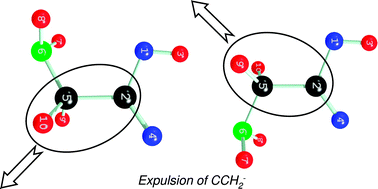Dissociative electron attachment to gas phase glycine: Exploring the decomposition pathways by mass separation of isobaric fragment anions†
Abstract
Dissociative

* Corresponding authors
a
Institut für Ionenphysik und Angewandte Physik, Leopold Franzens Universität Innsbruck and Center for Molecular Biosciences Innsbruck, Technikerstr. 25, Innsbruck, Austria
E-mail:
iln@chemie.fu-berlin.de
b Science Institute, University of Iceland, Dunhagi 3, Reykjavik, Iceland
c Institut für Chemie und Biochemie, Freie Universität Berlin, Takustrasse 3, Berlin, Germany
Dissociative

 Please wait while we load your content...
Something went wrong. Try again?
Please wait while we load your content...
Something went wrong. Try again?
A. Mauracher, S. Denifl, A. Aleem, N. Wendt, F. Zappa, P. Cicman, M. Probst, T. D. Märk, P. Scheier, H. D. Flosadóttir, O. Ingólfsson and E. Illenberger, Phys. Chem. Chem. Phys., 2007, 9, 5680 DOI: 10.1039/B709140K
To request permission to reproduce material from this article, please go to the Copyright Clearance Center request page.
If you are an author contributing to an RSC publication, you do not need to request permission provided correct acknowledgement is given.
If you are the author of this article, you do not need to request permission to reproduce figures and diagrams provided correct acknowledgement is given. If you want to reproduce the whole article in a third-party publication (excluding your thesis/dissertation for which permission is not required) please go to the Copyright Clearance Center request page.
Read more about how to correctly acknowledge RSC content.
 Fetching data from CrossRef.
Fetching data from CrossRef.
This may take some time to load.
Loading related content
